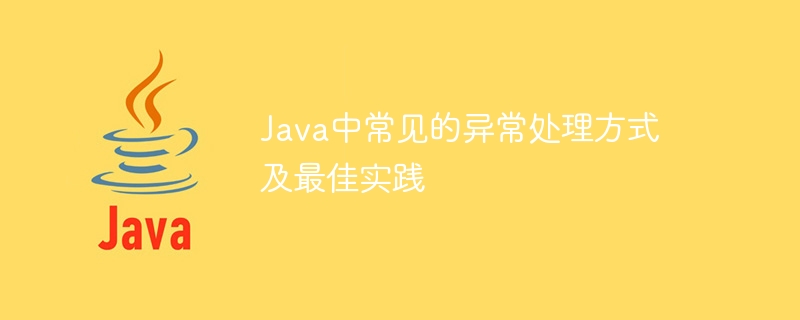

Common exception handling methods and best practices in Java
Introduction:
Java is a strongly typed, object-oriented programming language. During the development process , we often encounter various abnormal situations. Good exception handling is an important part of ensuring program stability and maintainability. This article will introduce common exception handling methods in Java and provide best practices and code examples.
1. Exception types in Java
Exception types in Java can be divided into two categories: Checked Exceptions and Unchecked Exceptions. Checked exceptions refer to exceptions that are checked by the Java compiler and must be handled in the code, otherwise compilation errors will occur. Unchecked exceptions refer to exceptions that the Java compiler does not force checking, and you can choose to handle or ignore them.
try {
// 可能会抛出异常的代码块
// 例如,读取文件、连接数据库等
} catch (IOException e) {
// 对IOException异常进行处理
} catch (SQLException e) {
// 对SQLException异常进行处理
}public void processArray(int[] arr) throws ArrayIndexOutOfBoundsException {
// 对传入的数组进行处理
// 例如,访问数组元素
}2. Best practices for exception handling
Good exception handling can improve the readability and maintainability of the code. The following are the best practices for exception handling:
public void processFile() {
try {
// 可能会抛出异常的代码块
} catch (IOException e) {
// 对IOException异常进行处理
}
}public void connectDatabase() throws SQLException {
// 连接数据库的操作
}try {
// 可能会抛出异常的代码块
} catch (FileNotFoundException e) {
// 对FileNotFoundException异常进行处理
} catch (IOException e) {
// 对IOException异常进行处理
}try {
// 可能会抛出异常的代码块
} catch (Exception e) {
logger.error("发生异常:", e);
}3. Common problems with exception handling
In the actual development process, you may encounter the following common problems with exception handling:
try {
// 可能会抛出异常的代码块
} catch (Exception e) {
logger.error("发生异常:", e);
// 其他异常处理逻辑
}try {
// 可能会抛出异常的代码块
} catch (Exception e) {
// 忽略异常的注释说明
// 其他逻辑
}try {
// 可能会抛出异常的代码块
} catch (Exception e) {
// 异常处理逻辑
} finally {
// 释放资源或者回滚事务等操作
}Conclusion:
Good exception handling is a crucial part of Java development. By properly using try-catch statements, throws keywords, and logging techniques, you can make your program more robust and easier to maintain. At the same time, we also need to avoid problems such as ignoring exceptions and catching too wide a range to ensure that exception handling is more precise and accurate.
The above is the detailed content of Common exception handling methods and best practices in Java. For more information, please follow other related articles on the PHP Chinese website!




